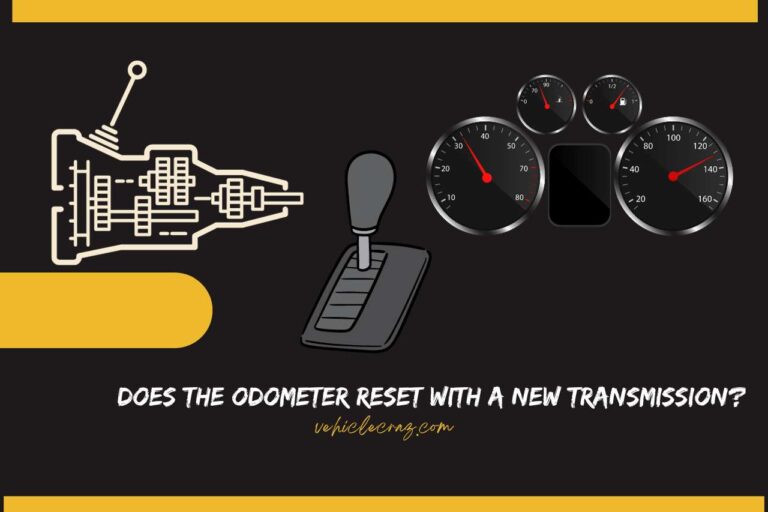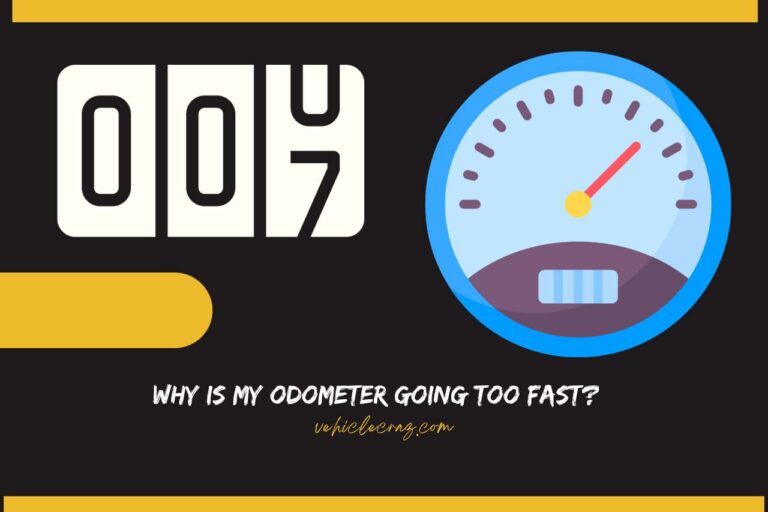Does An Odometer work In Reverse? Mechanism Explained
Does an odometer work in reverse? Isn’t this a question we always thought to ourselves? Today is the time to get the correct answer as this article not only addresses the primary question but also ventures you to understand if driving your car backward affects mileage, the intricate workings of an odometer, and instances when odometers might seem to roll back, excluding fraudulent activities. Let’s get going!
Does an Odometer Work in Reverse?
An odometer does not work in reverse. In modern vehicles, especially those manufactured after the 1980s, the odometer is designed to only record the distance traveled in a forward motion. Why? Well, this is done to maintain the authenticity of the mileage count on your vehicle, ensuring that the true history of its usage cannot be manipulated or tampered with.
The reason for this mechanism stems from the desire of car manufacturers and legal bodies to prevent mileage fraud. Mileage fraud is when someone tries to roll back the odometer to show fewer miles than the car has actually traveled, making it appear as if the car has less wear and tear. What’s wrong with it, you may ask?
Honestly, this can deceptively increase the resale value of your vehicle. So, to mitigate such deceptive practices, odometers are built to only count miles when moving forward, rendering reverse manipulation efforts ineffective.


Does Driving a Car Backward Reverse Mileage?
Driving a car backward does not reverse its mileage. In modern vehicles, our odometers are specifically designed to track distance regardless of the direction our car is moving in. When you drive backward, the odometer will still record the distance, but it won’t subtract from the total mileage you have already accumulated. This design is intentional to prevent potential fraud and odometer tampering.
In past decades, our researcher’s observation statics revealed that some mechanical odometers could be tricked by driving in reverse, leading to unscrupulous practices to deceitfully lower a vehicle’s apparent mileage. However, with advancements in technology and stringent regulations, today’s digital odometers have safeguards that maintain your car’s genuine mileage history, ensuring transparency and honesty in vehicle transactions.
How Does a Odometer Work?
An odometer works by measuring the rotation of the vehicle’s wheels. Each full rotation corresponds to a specific distance traveled, and by counting these rotations, the odometer can calculate the total distance your car has moved.
Mechanical Odometers
Historically, odometers were mechanical devices directly linked to your car’s transmission. They consisted of a series of gears calibrated to your car’s tire size. As your wheels turned, these gears would rotate, and each rotation would be translated into a specific distance that would be displayed on your odometer.
Electronic Odometers
Modern cars have largely shifted to electronic odometers. These utilize a sensor connected to your vehicle’s transmission, which sends electronic pulses corresponding to wheel rotations. An onboard computer then processes these pulses and converts them into distance measurements displayed on your dashboard.
Accuracy and Calibration
It’s essential that our odometers are calibrated correctly, taking into account factors like tire size and transmission specifics. Any changes in these (like installing larger tires) can lead to discrepancies in distance recording.
The basic principle of counting wheel rotations remains unchanged. The methods and technologies for odometer operations have evolved significantly, ensuring more accurate and tamper-resistant mileage recording.
Does Your Odometer Go Up in Neutral?
Your odometer does not go up in neutral. The odometer measures the distance your vehicle travels, and it is primarily connected to the movement of your car’s wheels.
Odometer Functionality
Regardless of the gear your car is in, including neutral, the odometer will record the distance as long as your wheels are turning. If your car is being towed or is coasting downhill in neutral, the odometer will continue to register miles.
Transmission Settings and Odometer
Your odometer is independent of the transmission’s gear setting. It’s your wheel’s motion, rather than the engine’s operation or gear setting, that determines your recorded distance.
Therefore, your vehicle’s odometer focuses on the movement of your wheels. Thus, even in neutral, if your car moves, the odometer will record the distance you traveled.
Instances Where the Odometer Automatically Rolls Back (not odometer fraud)
While your first thought when discussing odometer rollback would have been fraud or tampering, there are legitimate instances where an odometer might seem to roll back. Here are some situations where this can occur:
Mechanical Malfunction
Older vehicles with mechanical odometers might experience malfunctions due to worn-out gears. This can cause your odometer to occasionally skip backward.
Electrical Glitches
In modern cars with digital odometers, a software bug or electrical issue might temporarily show an inaccurate reading, which can sometimes appear as a rollback.
Battery Replacement
Disconnecting or replacing your car’s battery might reset some electronic systems, possibly affecting your odometer in rare instances.
Cluster Replacement
If your vehicle’s instrument cluster is replaced (for reasons other than fraud), the new odometer might not reflect your vehicle’s actual mileage until it’s properly programmed, leading to discrepancies.
It’s crucial for owners like us to be aware of these instances to avoid misunderstandings. If such a situation arises, it’s advisable to consult a mechanic or car manufacturer, as we did, to rectify the issue.


I’m Alex, a seasoned mechanical teacher with over 20 years of hands-on experience in Australia. My passion for all things automotive has driven me to establish this blog, aiming to share my wealth of knowledge and expertise with fellow enthusiasts, DIYers, and anyone keen on understanding the mechanics behind the machines we rely on daily.







